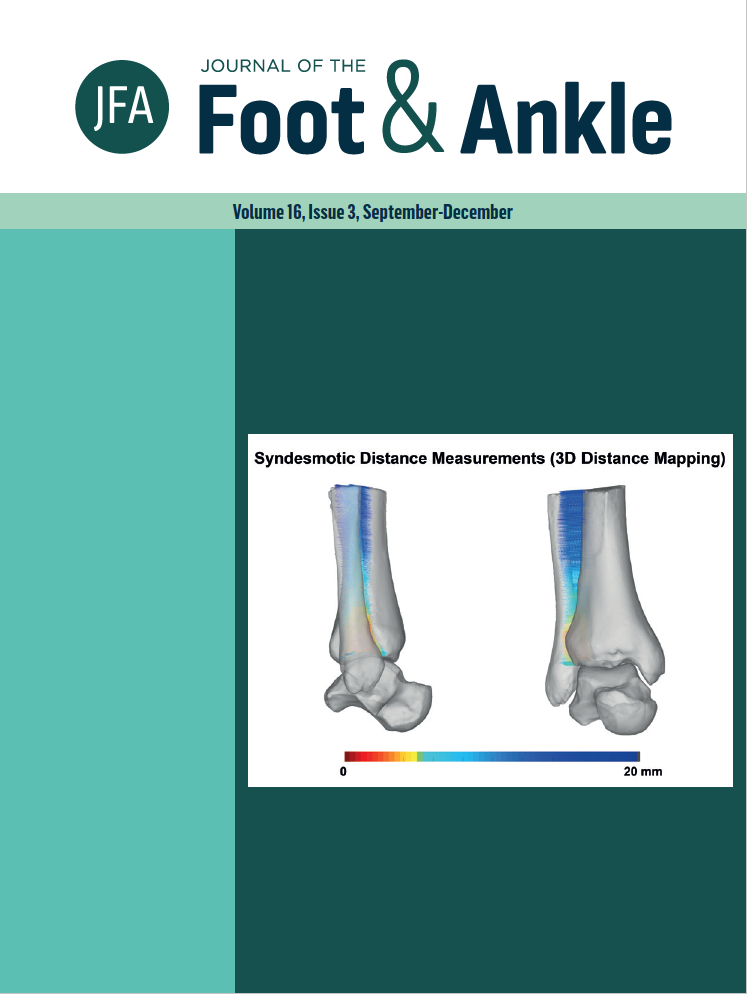Therapeutic option for patients with severe hallux rigidus
DOI:
https://doi.org/10.30795/jfootankle.2022.v16.1640Keywords:
Hallux rigidus, Metatarsal bone, Metatarsophalangeal joint, OsteotomyAbstract
Objective: Subclassify grade III of Hattrup and Johnson classification into two groups, according to the remaining percentage of plantar articular cartilage, and propose a treatment option other than arthrodesis for some of these patients. Methods: Twenty-one patients with grade III hallux rigidus were operated on between February 2015 and January 2020. The radiographic Hattrup and Johnson’s classification was used, and grade III patients were submitted to frontal, lateral, and oblique radiographs. Eventually, a computed tomography (CT) was performed. The viable surface of the plantar cartilage and the percentage of the total joint was determined: if there is up to 50% of remaining plantar articular cartilage, the joint was preserved, indicating Weil osteotomy of the first metatarsal, associated with wide dorsal cheilectomy (type 3A); if less than 50%, metatarsophalangeal arthrodesis was indicated (type 3B). Patients with the first metatarsal at least 5 mm shorter than the second on frontal radiograph were excluded from the study. Results: A mean postoperative American Orthopaedic Foot & Ankle Society (AOFAS) score of 91 was obtained. To date, no patient has needed arthrodesis, and all patients have increased joint range of motion. Shortening the central metatarsals was not necessary as a second procedure due to transfer metatarsalgia. Conclusion: Some joints classified as grade III can be treated with an osteotomy without needing arthrodesis. Level of Evidence IV; Therapeutic Study; Case Series.
Downloads
Published
How to Cite
Issue
Section
License
Copyright (c) 2022 Journal of the Foot & Ankle

This work is licensed under a Creative Commons Attribution-NonCommercial 4.0 International License.







